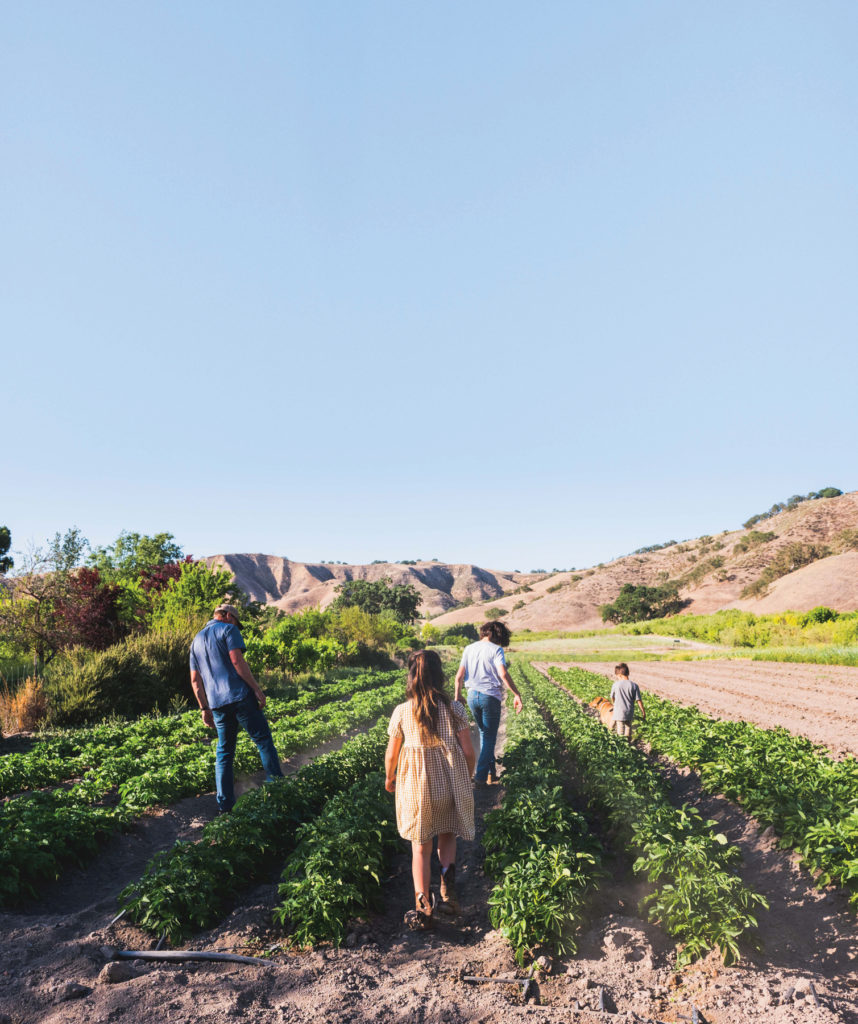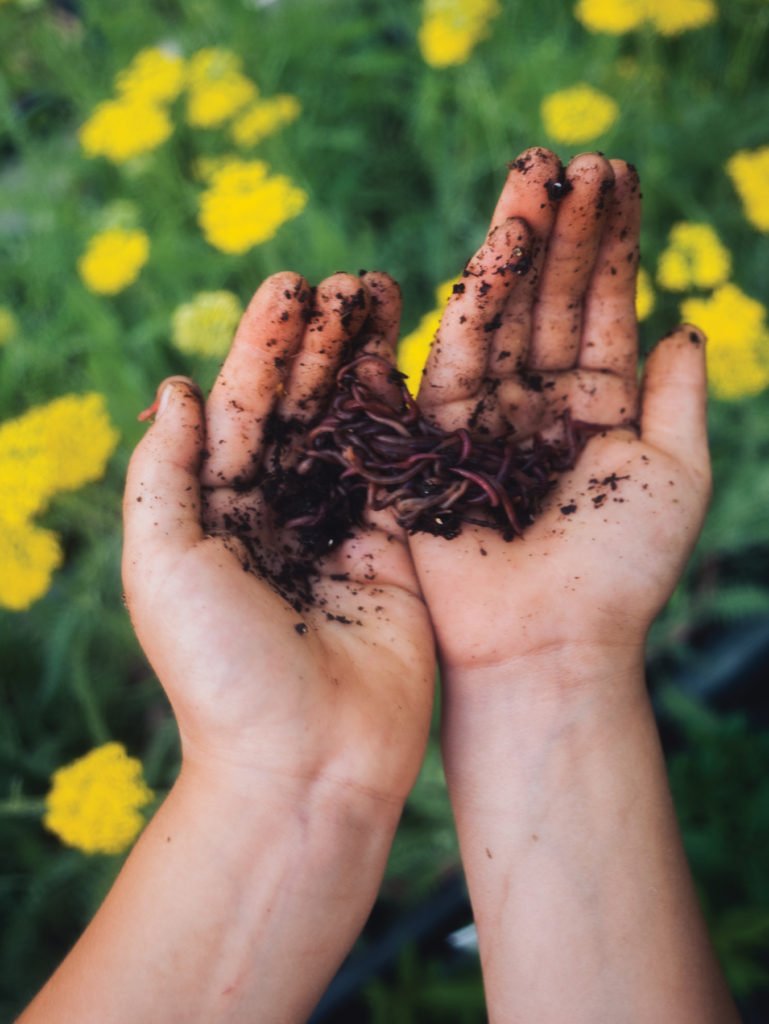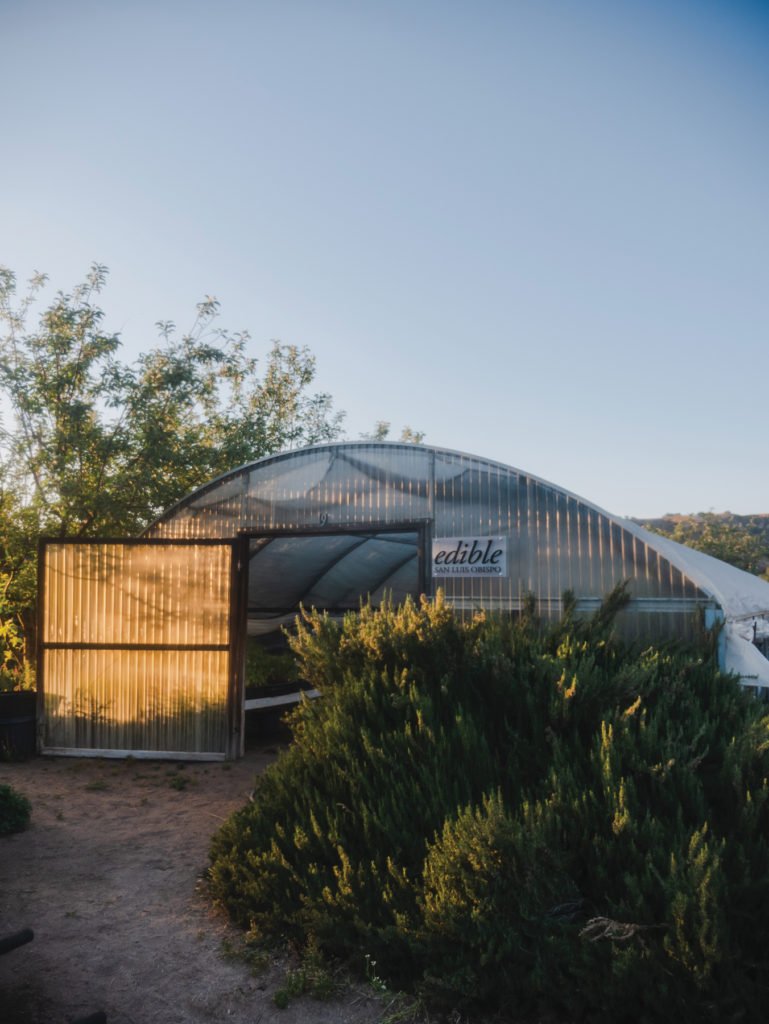
Windrose Farm Is All Grown Up. Now Here’s What’s Next.
On a 50-acre stretch of countryside east of Paso Robles, where the sun’s heat has long since turned the hills golden brown, a sustainable family farm is nestled into the hidden valley. It was with the so-called Four Es of sustainability — environment, economy, energy and equity — that Windrose Farm was developed nearly three decades ago by Barbara and Bill Spencer, pioneers of small farming in north county, and mentors to many.
Ownership of the farm recently changed hands from the Spencers, as they approach their retirement years, to Catherine and Justin Welch, both Cal Poly graduates, and their four children ranging in age from 6 to 12 years. Taking on a farm isn’t something the Welch family, which relocated from a quaint and fashionable Pasadena neighborhood, had planned on. Yet, these new residents have the very mix of energy, curiosity and enthusiasm that Bill and Barbara had envisioned their successors would have to successfully continue the farm’s legacy.
The Spencers had been looking for buyers who, like them, valued biodynamic practices. Meanwhile, the Welches desired to raise and empower their children Andrew, Lauren, Natalie and Aiden, on farmland where they could personally connect with the food they would grow. Justin and Catherine bought the land in the fall of 2020 and began planting crops by January. The biodynamic calendar dictates when they seed.

From seeding and tilling to watering and growing, tending the rows of crops through biodynamic practices has proven highly labor intensive. The process also involves using farm-produced compost, rotating the grazers and promoting a healthy relationship between the soil, crops and animals. Justin and Catherine believe strongly in a holistic approach.
Currently, Justin works on the farm morning to night, while Catherine remotely runs an embryology lab, performing farming duties in any spare moments she finds between her full-time job obligations. She travels south on weekends to the Santa Monica Farmers’ Market, taking for sale an array of produce and herbs grown on the farm.
After a hard day’s work the family comes together to cook dinner using food they’ve cultivated themselves. They are in a position they’re grateful for: While some parents’ work functions dictate the need for childcare, life on the farm allows the Welches to live and work exactly how they want to, together.

Sharing thoughts around a dinner table adorned with Korean BBQ, Catherine and Justin each recount how they were raised to pursue what brings them joy. Catherine’s background in the culinary arts and Justin’s experience working harvest for SLO County wineries illustrate the couple’s fascination with learning from the land how to sustain both themselves and the farm.
“There are multiple paths in farming to get to the same outcome,” Catherine says, “just like in scientific research.” As an embryologist, she relates much of her ever-expanding curiosity of farming to how she approaches her field of scientific study. “It’s really like finding your own truth. It’s about becoming one with the land.”
Since moving in, the Welches have added to the farm numerous greenhouses filled with edible greens and herbs, a structure dedicated solely to agave and a variety of animals, including lambs and kunekune pigs (a New Zealand breed of animal known for its rich and marbly fat). Geese, chickens, two horses, ranch dogs and honey bees also live on the farm. The Welch children are often found freely running and playing with the animals, which they’ve learned how to raise.

As I tour the farm with them it becomes clear the family has rooted itself in every corner of the property, growing alongside the different plants and animals that nourish them. When Catherine and Justin open the greenhouse of lettuces and herbs filled with the likes of German chamomile, rosemary and yarrow, the kids bolt to the back corner to sift their hands through a tub filled with soil and wiggling worms. The children pick up the worms, oohing and aahing with satisfaction.

This is the enriching life Catherine and Justin have been able to provide for their kids — a childhood in which they learn and understand where their food comes from beyond the supermarket shelves. The goal for Catherine and Justin is not simply to inform their children but to instill in them a deeper connection between food and the greater community, too.
“Most people don’t know that it takes nine months for a head of garlic to reach a grocery store,” Catherine says of the long-maturing crop. “And this is something we can teach,” to her children, yes, but also to the general public. “We can make an impact by teaching one person at a time.”

Editor’s note: Windrose Farm has partnered with Edible San Luis Obispo to create the Edible Greenhouse at Windrose Farm, a place where community members can learn about farming practices and participate in community harvest days.

